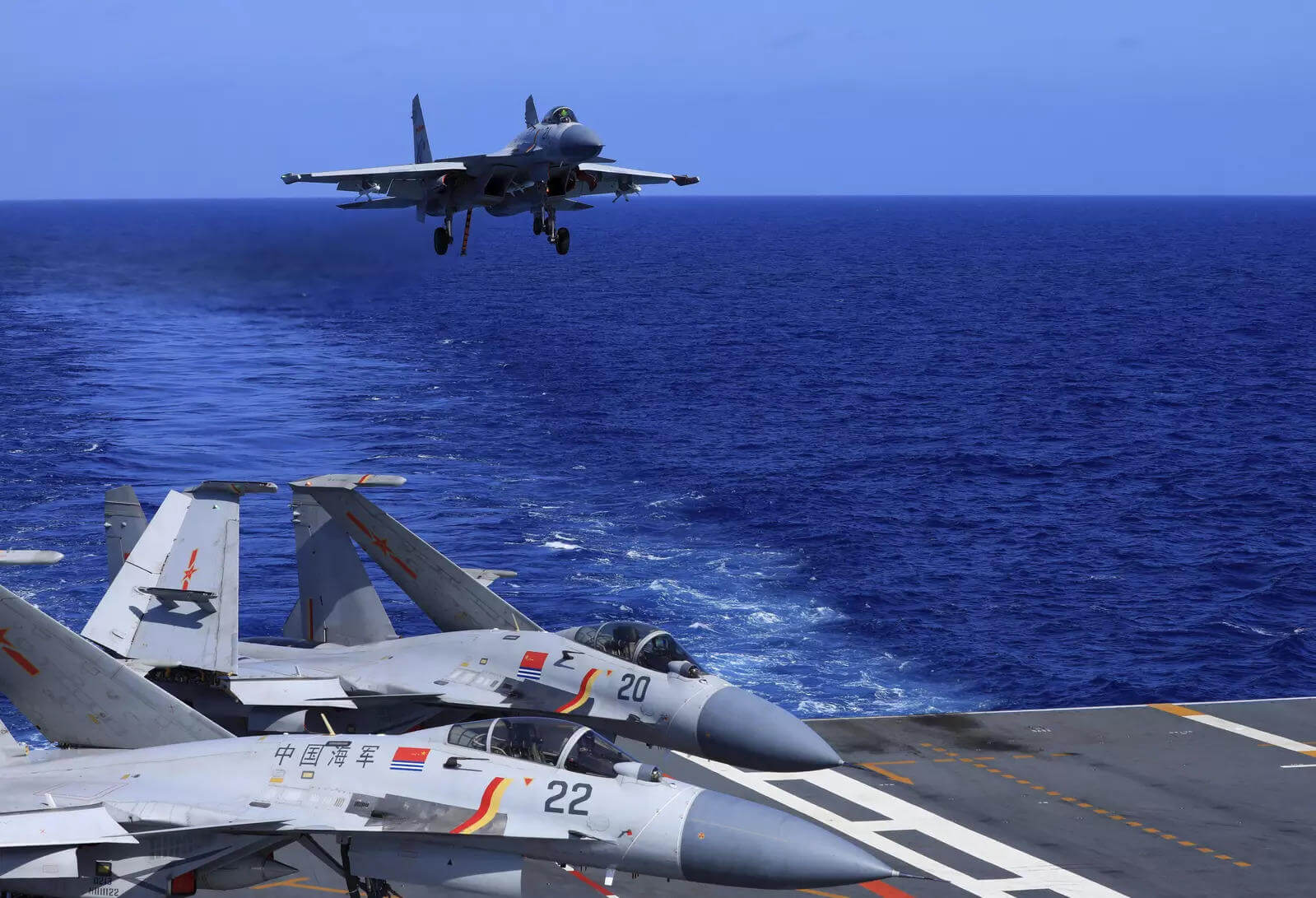Australian Prime Minister (PM) Anthony Albanese reached out to the Chinese government to express concern over the “dangerous manoeuvre” by a Chinese fighter jet near a Royal Australian Air Force (RAAF) reconnaissance airplane that was flying over the South China Sea while conducting “routine maritime surveillance activity” in international airspace.
During a press conference on Sunday, Albanese said the government has raised the issue with Beijing “through appropriate channels.”
Commenting on the incident, which took place on May 26, Defence Minister Richard Marles said, “The Chinese J-16 aircraft flew very close to the side of the Australian plane, where it released flares. The J-16 then accelerated and cut across the nose of the P-8, settling in front of the P-8 at very close distance.”
Marles added, “At that moment, it then released a bundle of chaff, which contains small pieces of aluminium, some of which were ingested into the engine of the P-8 aircraft. Quite obviously, this is very dangerous.”
Furthermore, Marles reaffirmed that Australian forces were adhering to international law and underscored that the stand-off would not deter Australian forces from undertaking reconnaissance activities to ensure freedom of navigation in the South China Sea.
Opposition leader and former Defence Minister Peter Dutton also expressed concern over the incident and reaffirmed the opposition’s support for the government to keep the country safe.
According to Australia’s Defence department press release, a RAAF P-8 surveillance aircraft was intercepted by a Chinese J-16 fighter jet during routine reconnaissance activity in the South China Sea on May 26. “The intercept resulted in a dangerous manoeuvre which posed a safety threat to the P-8 aircraft and its crew,” it said.
In response, China slammed Australia for “hyping” the aircraft incident and called Canberra “Washington’s goon.” Through state-run media outlet Global Times (GT), China accused Australia of hiding “pivotal details,” such as where the incident occurred, why an Australian aircraft was present in the region, and what was it doing before it was intercepted.
China doesn't allow any country to violate China's sovereignty&security and harm peace&stability in S.China Sea, using "freedom of navigation" as excuse, FM said, in response to Australia's claim that China intercepted an Australian spy plane. pic.twitter.com/RTTZ87aZZy
— Global Times (@globaltimesnews) June 6, 2022
GT added, “ The Australian military has repeatedly groundlessly accused the Chinese People’s Liberation Army (PLA) of conducting unsafe and unprofessional operations, but why does it always come as loud and urgent but with little evidence?”
In addition, the article noted Australian military aircrafts’ reconnaissance activities in the East China Sea to the north of Taiwan and said Australia “seems more like a little bully in the region that always coerces others.”
The article further warned Albanese’s new Labor government against following its predecessor to become Washington’s “right-hand man” and against considering itself the “deputy-sheriff of the Asia-Pacific region.”
Chinese and Australian forces have had several encounters in recent months. In February, Australia called for an independent investigation after it accused China of targeting an Australian naval vessel off the northern coastline. Former PM Scott Morrison denounced China for its “act of intimidation,” which he said had potentially endangered the lives of the crew on board the vessel.
In recent years, the Chinese government has expanded its control in the South China Sea, which is thought to hold 11 billion barrels of untapped oil and 190 trillion cubic feet of natural gas. This has led to territorial disputes with Brunei, Indonesia, Taiwan, Vietnam, and the Philippines. Since 2015, China has built and militarised several artificial islands to strengthen its claims in the region.
UN Security Council resolution never authorized any country to deploy forces in territorial waters or airspace of another country to uphold a resolution, Chinese FM said, in response to Canada's close-in recon on China in the name of monitoring UN resolution on N.Korea. pic.twitter.com/iMhgWwuKhj
— Global Times (@globaltimesnews) June 6, 2022
However, the International Court of Justice (ICJ) has rejected China’s historical claims to the region. In 2016, the ICJ’s Permanent Court of Arbitration rejected China’s case, citing a lack of evidence proving that it has historically exercised exclusive control over water or resources in the area. China dismissed the Court’s ruling, calling it “ill-founded,” and refused to abide by it.
Australia, however, says China’s claims as “inconsistent” with international law, or the United Nations Convention for the Law of the Sea (UNCLOS), and arguing that there is “no legal basis for China to draw straight baselines connecting the outermost points of maritime features or ‘island groups’ in the South China Sea, including around the ‘Four Sha’ or ‘continental’ or ‘outlying’ archipelagos.”
It has also It also objected to China’s construction of artificial islands on small shoals and reefs.

